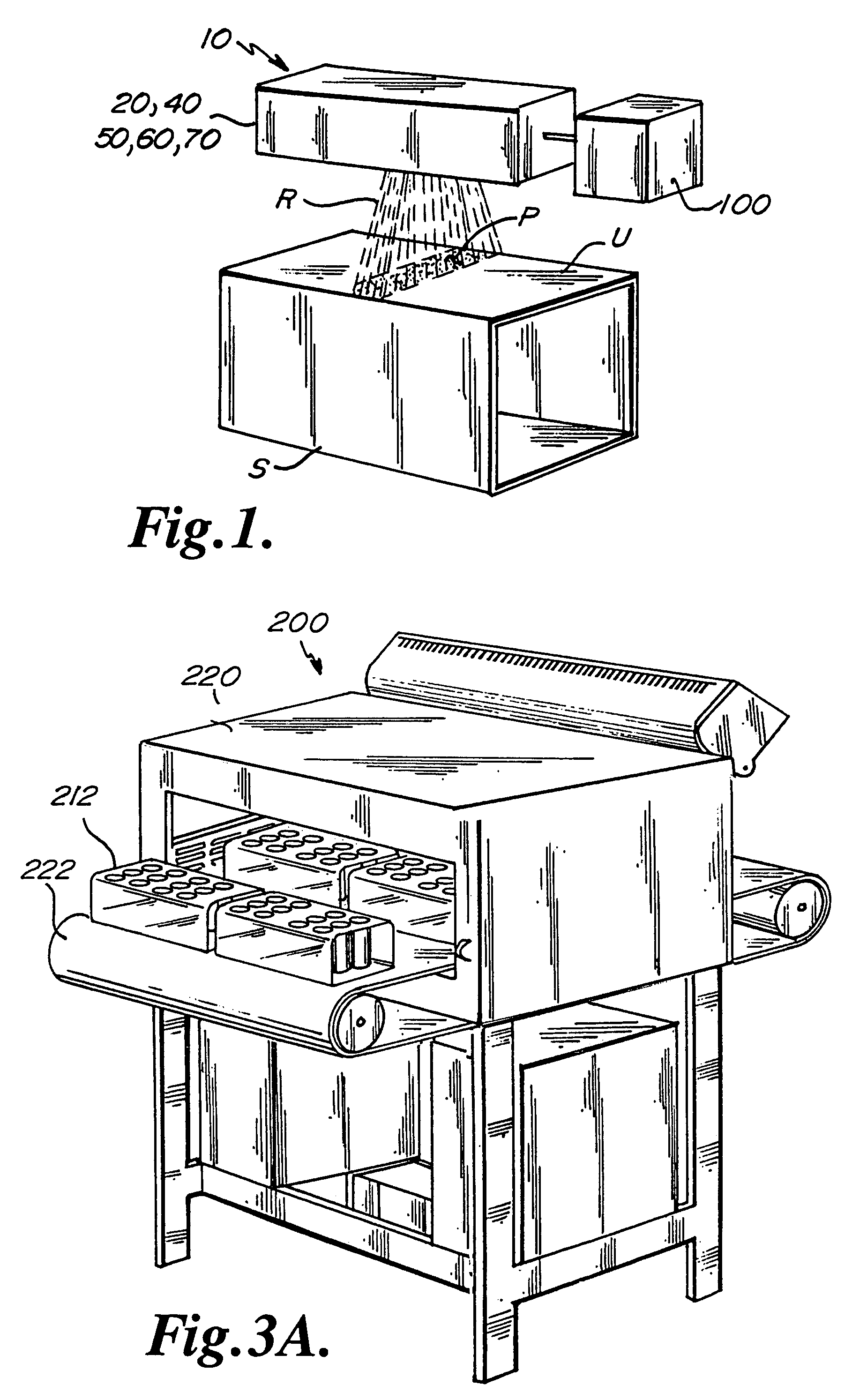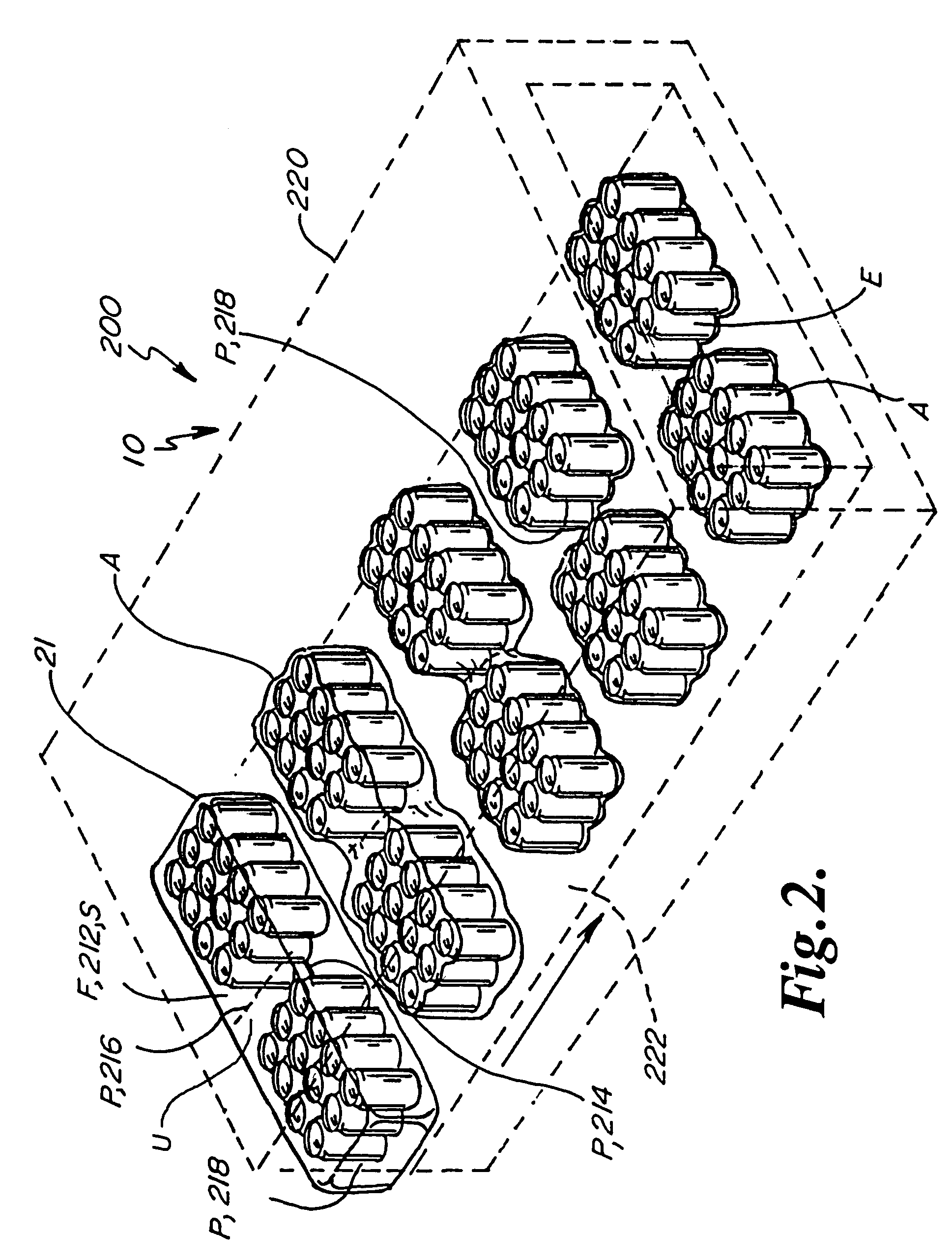Apparatus and method for selective processing of materials with radiant energy
a technology of radiant energy and apparatus, applied in the field of apparatus and method for selective processing of materials with radiant energy, can solve the problems of significant heat loss, reduced efficiency, and inefficient conversion of radiation generators, and achieve the effects of maximizing the contact volume of airflow, reducing heat loss, and increasing speed
- Summary
- Abstract
- Description
- Claims
- Application Information
AI Technical Summary
Benefits of technology
Problems solved by technology
Method used
Image
Examples
Embodiment Construction
[0128]In general terms, as shown in FIG. 1, the present invention comprises an apparatus 10 for selective processing of a substrate S using radiant energy. The substrate S has a portion P to be processed and a larger portion U to be substantially unprocessed.
[0129]The apparatus 10 further comprises a source 20 of radiant energy R having a customizable wavelength λc or spectrum of wavelengths λc1, λc2, adapted to be configured to be specifically absorbed by the portion P to be processed and to substantially unabsorbed by the portion U.
[0130]In one embodiment, the source 20 of radiant energy R is a quantum cascade laser 40. Preferably, the quantum cascade laser 40 is configured to emit infrared radiation. Alternatively, the quantum cascade laser 40 is configured to emit visible radiation as a guide for alignment and verification of operation. Alternatively, the quantum cascade laser 40 may be configured to emit ultraviolet radiation.
[0131]The QC laser, invented at Bell Laboratories in...
PUM
| Property | Measurement | Unit |
|---|---|---|
| wavelength | aaaaa | aaaaa |
| wavelength | aaaaa | aaaaa |
| wavelength | aaaaa | aaaaa |
Abstract
Description
Claims
Application Information
 Login to View More
Login to View More - R&D
- Intellectual Property
- Life Sciences
- Materials
- Tech Scout
- Unparalleled Data Quality
- Higher Quality Content
- 60% Fewer Hallucinations
Browse by: Latest US Patents, China's latest patents, Technical Efficacy Thesaurus, Application Domain, Technology Topic, Popular Technical Reports.
© 2025 PatSnap. All rights reserved.Legal|Privacy policy|Modern Slavery Act Transparency Statement|Sitemap|About US| Contact US: help@patsnap.com



